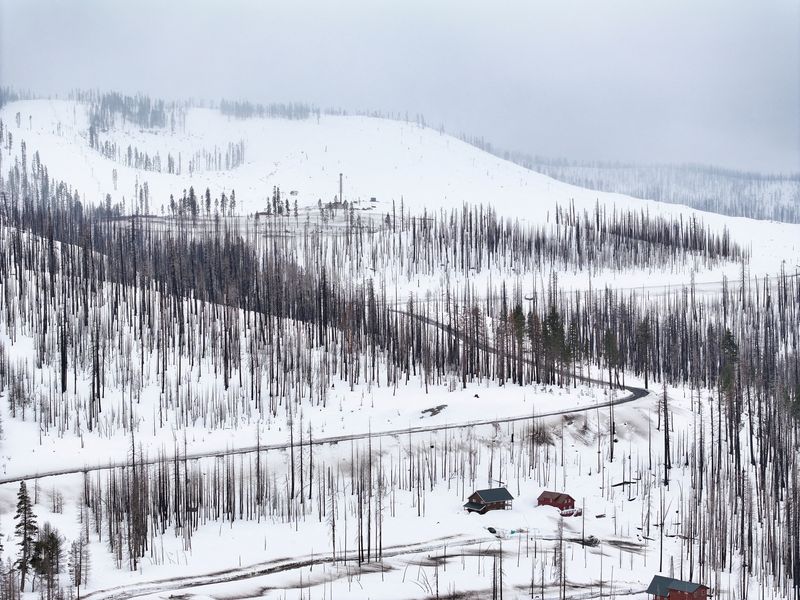
©Reuters. FILE PHOTO: An aerial view from a drone of the Sierra Nevada mountain peaks near the Phillips Station meadow, shortly before the California Department of Water Resources’ third snow media survey of the 2024 season, California, United States, February 29 2024. Fred Greaves/C
2/2
By Daniele Trotta
(Reuters) – A blizzard that dumped up to 3 meters of snow on California’s mountains in recent days has pushed snowpack levels above average for the first time this year, a welcome reward before snow inevitably returns. hot and dry climate.
But experts warn that much of the excess could be washed away by a warm storm, and that snow levels measuring just a few points above average will fail to solve long-term problems.
California, home to nearly 40 million people and a $50 billion agricultural industry, is eyeing the Sierra Nevada snowpack as a buffer for future water supplies.
After suffering a historic drought for much of this century, the state is on track for a second consecutive wet year.
Precipitation will help recharge aquifers and reservoirs, improve fish habitat and ease constraints on farmers. While moisture may ward off fires for now, rain also encourages the growth of vegetation that will fuel future fires.
“It’s a pretty stark contrast to where we were in January, when there was very little snow in the mountains,” said Heather Cooley, research director at the Pacific Institute, a water-focused think tank. “But there is still a long way to go to reverse the overextraction we saw during the drought years.”
With droughts becoming more frequent and intense due to climate change, policymakers must pursue projects such as water recycling, stormwater capture and floodplain restoration to ensure long-term supplies, Cooley said .
“We can’t get distracted by one year, even a good two years,” Cooley said.
Statewide, according to the California Department of Water Resources, snow levels were at 104% of average for March 4, with the Northern region at 111% of normal and the South at 94%. But water managers place more weight on snowpack measurements starting April 1, the traditional peak, and the current statewide level is just 94% of the April 1 average.
Additionally, the recent blizzard was an exception to this year’s warm and rainy weather. Another warm storm would wipe out much of the reserve and increase the risk of flooding.
“The last thing we need is a really warm, wet storm that comes through and causes a lot of flooding and leads to all the snow melting all at once,” said Justin Collins, a meteorologist with the National’s bureau Weather Service of Reno. .